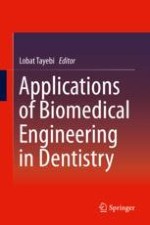2020 | OriginalPaper | Chapter
13. Application of Stem Cell Encapsulated Hydrogel in Dentistry
Authors : Abdolreza Ardeshirylajimi, Ali Golchin, Jessica Vargas, Lobat Tayebi
Published in: Applications of Biomedical Engineering in Dentistry
Publisher: Springer International Publishing
Activate our intelligent search to find suitable subject content or patents.
Select sections of text to find matching patents with Artificial Intelligence. powered by
Select sections of text to find additional relevant content using AI-assisted search. powered by
